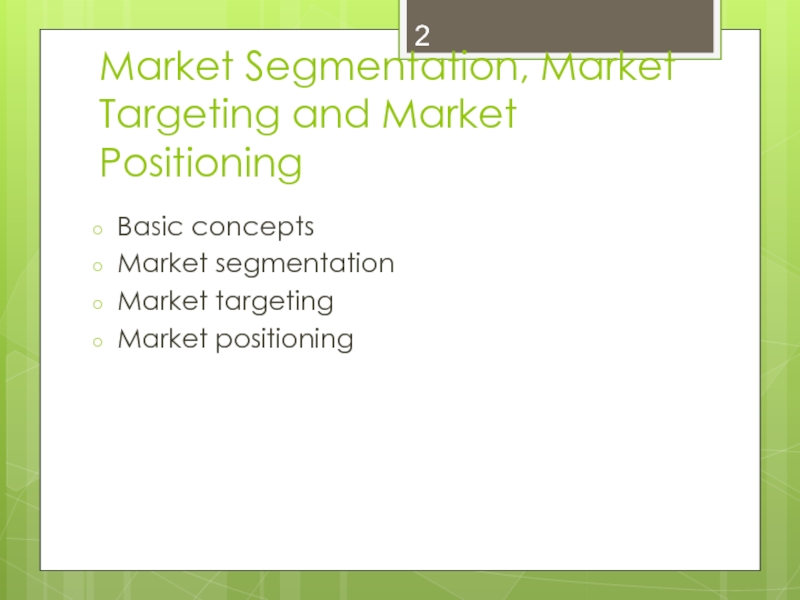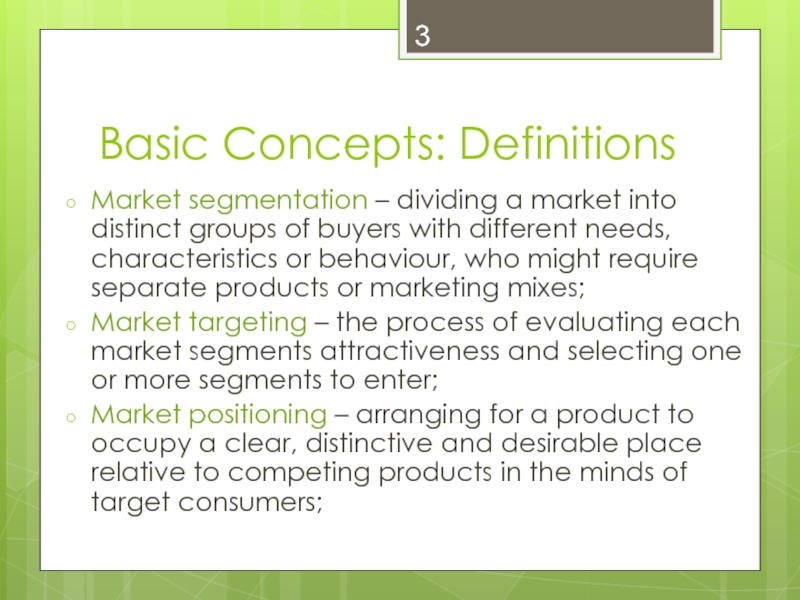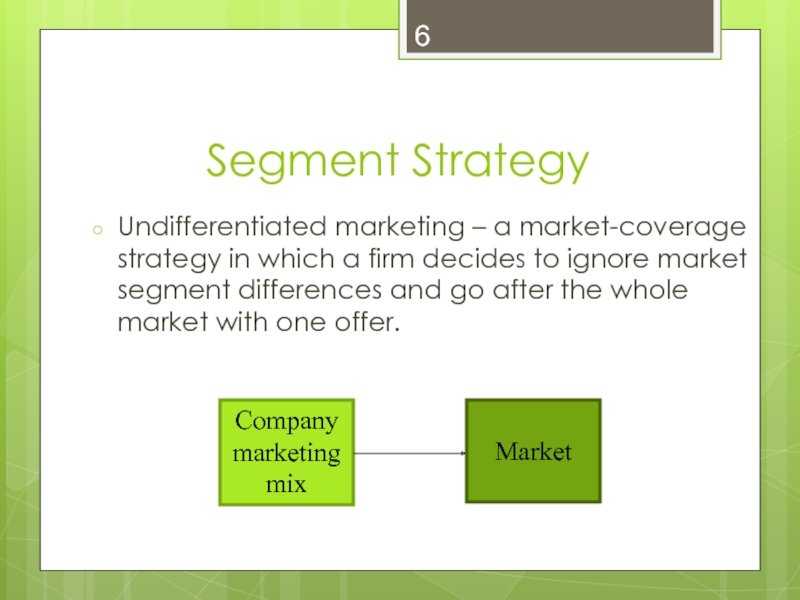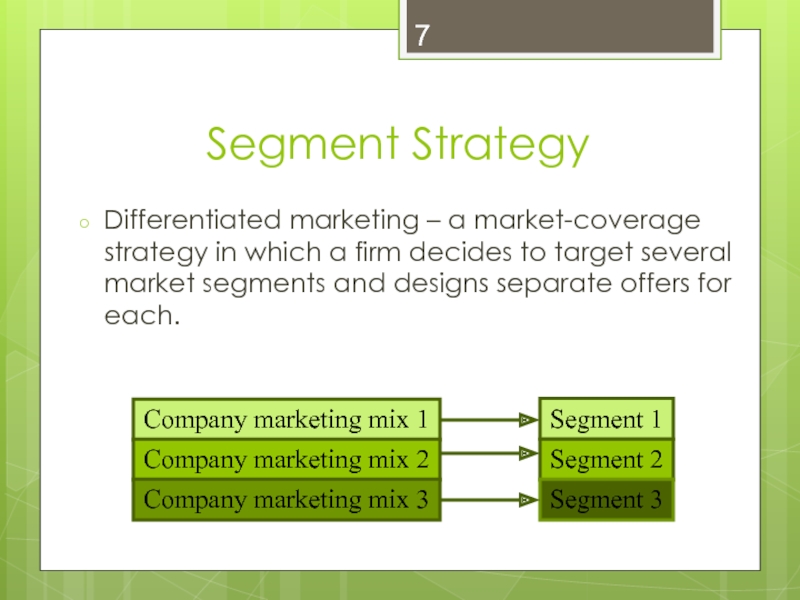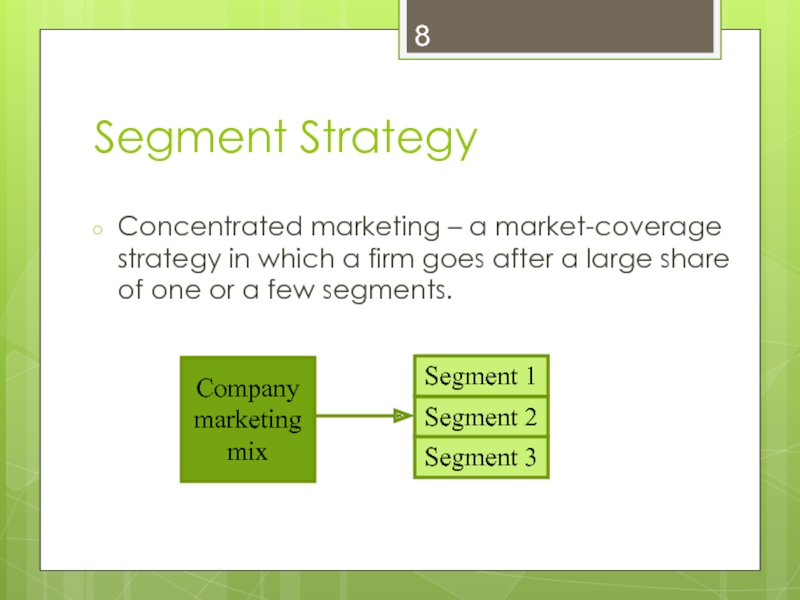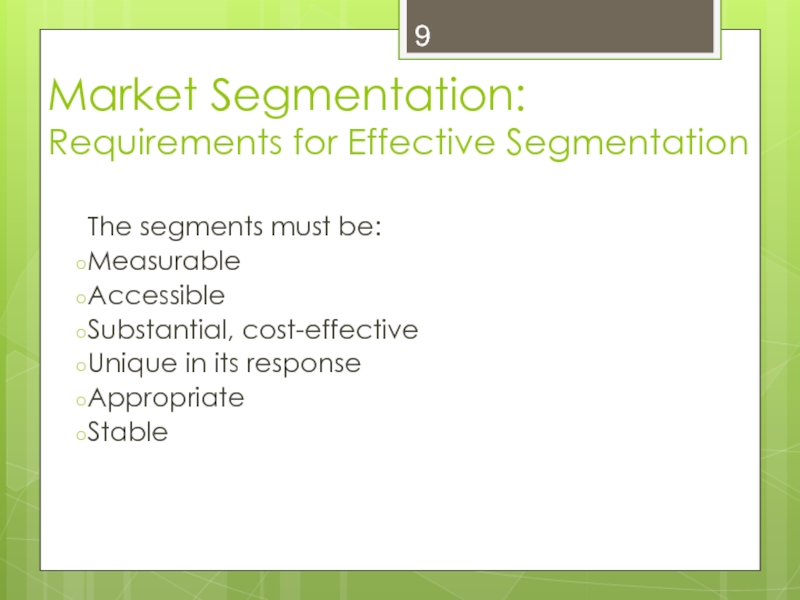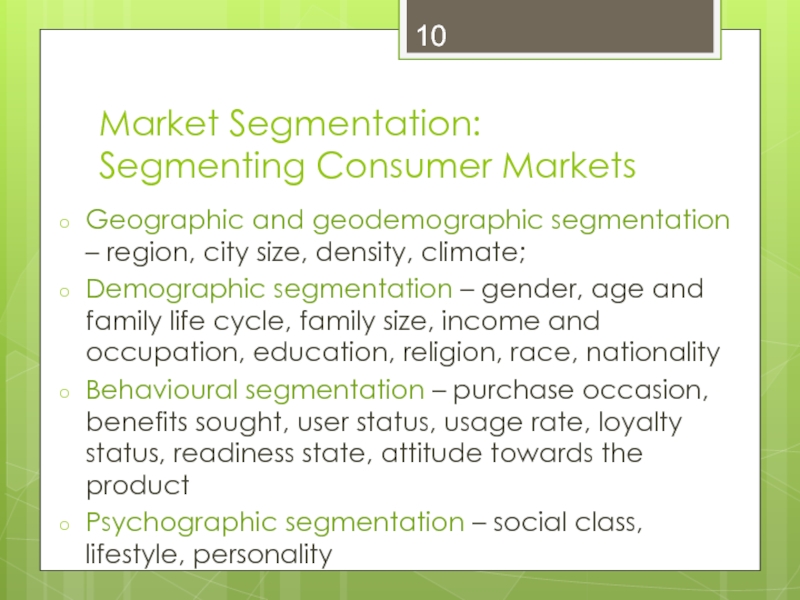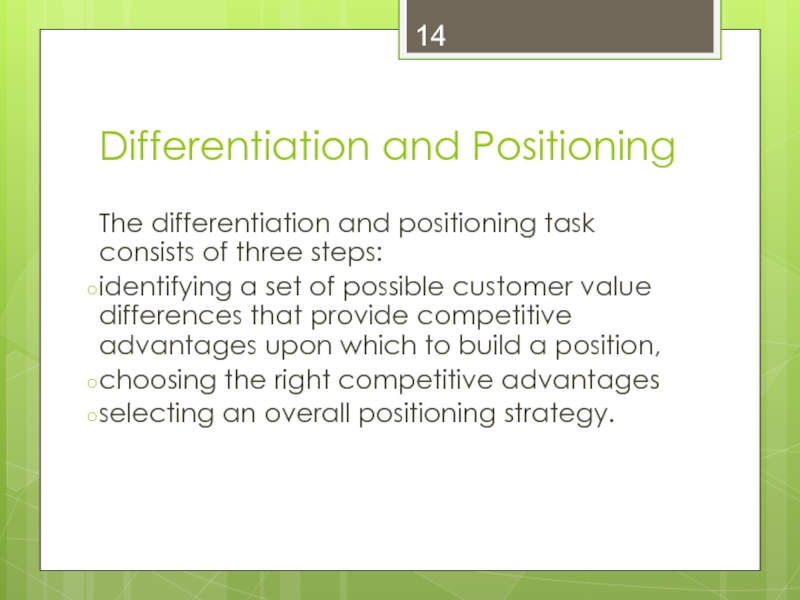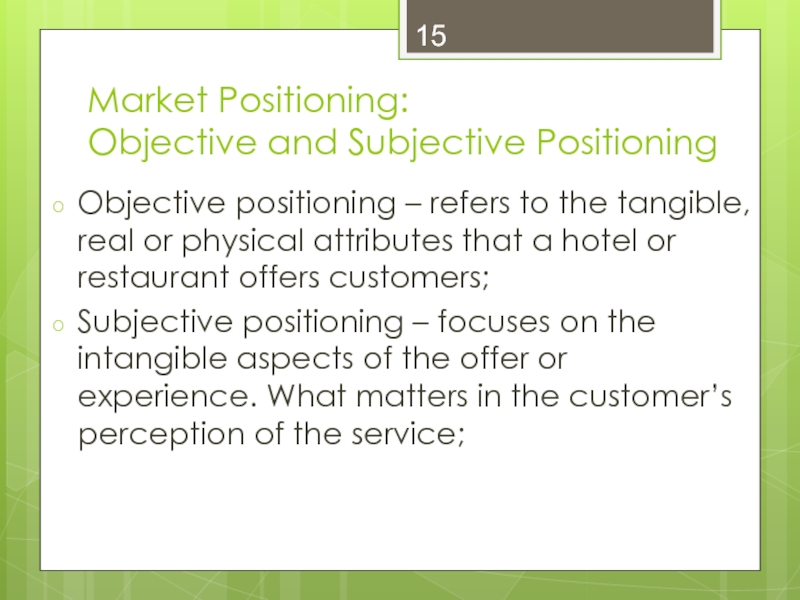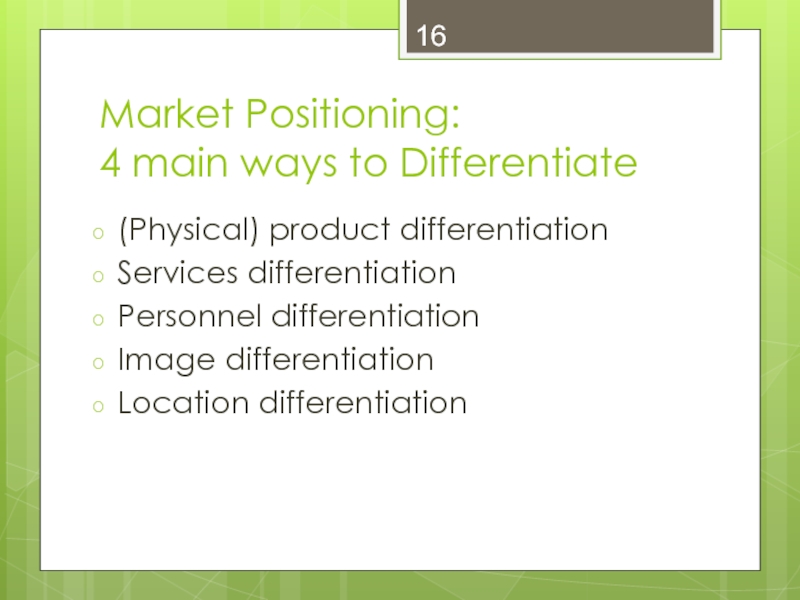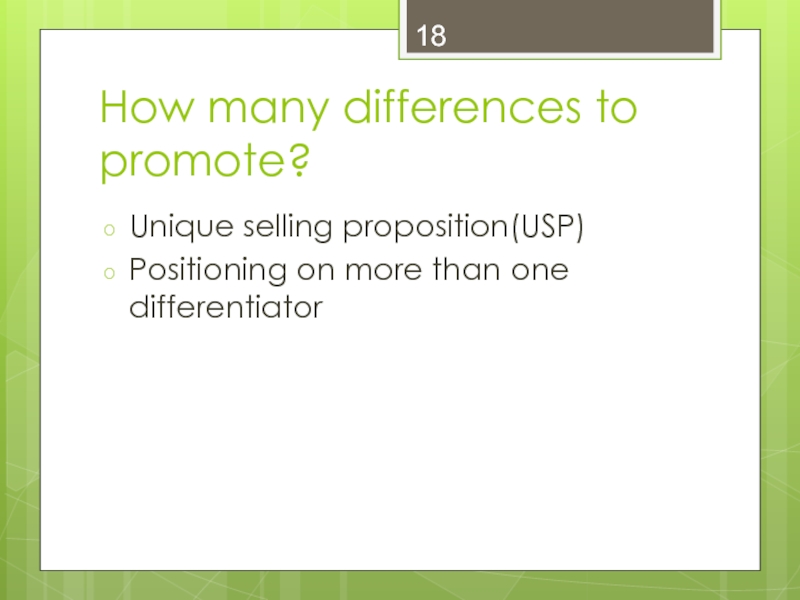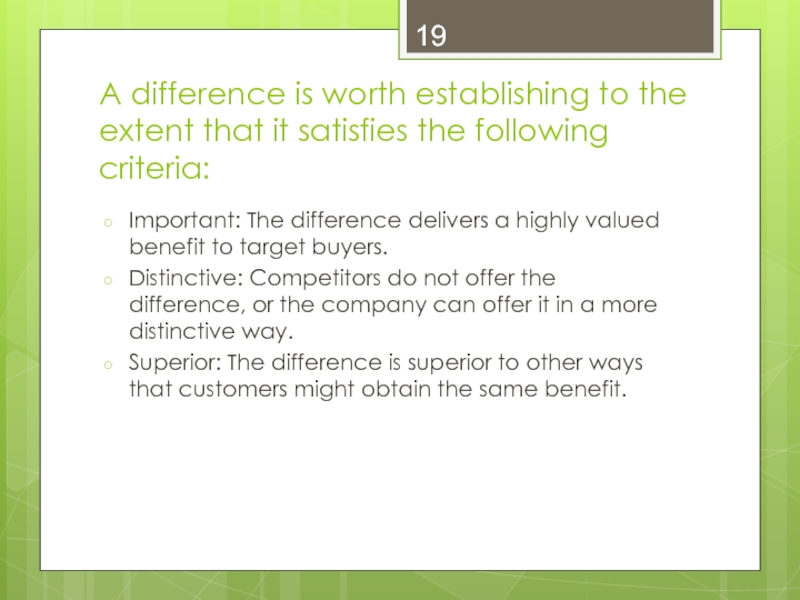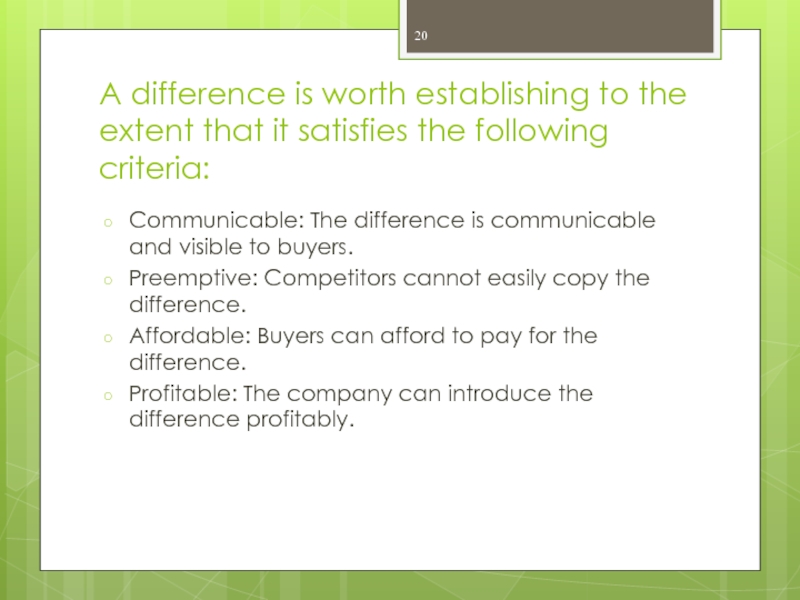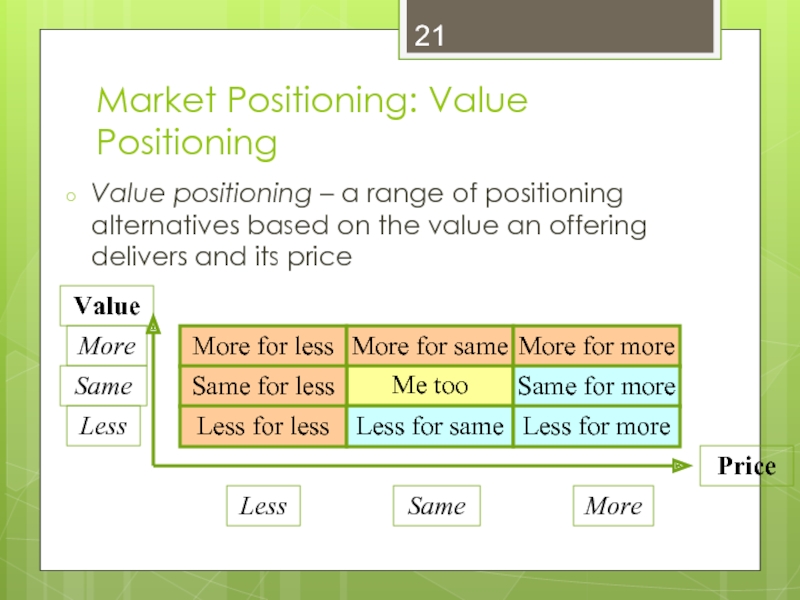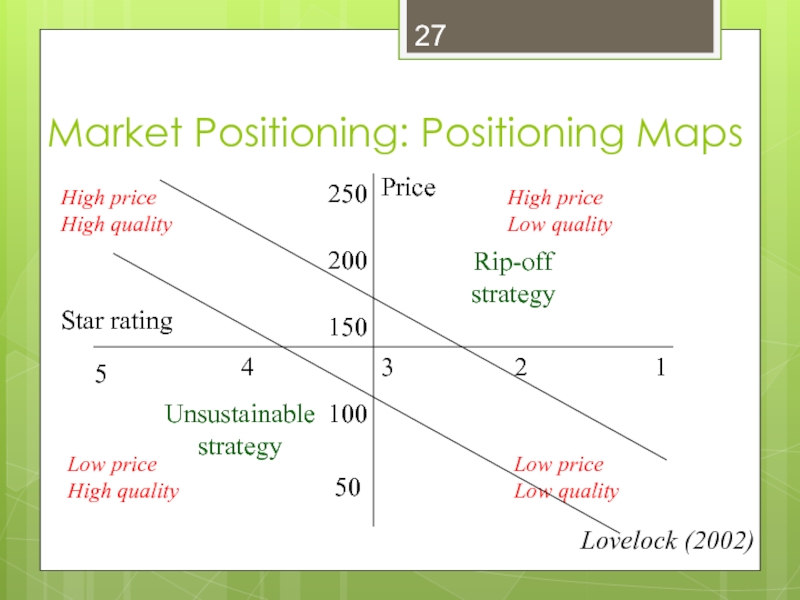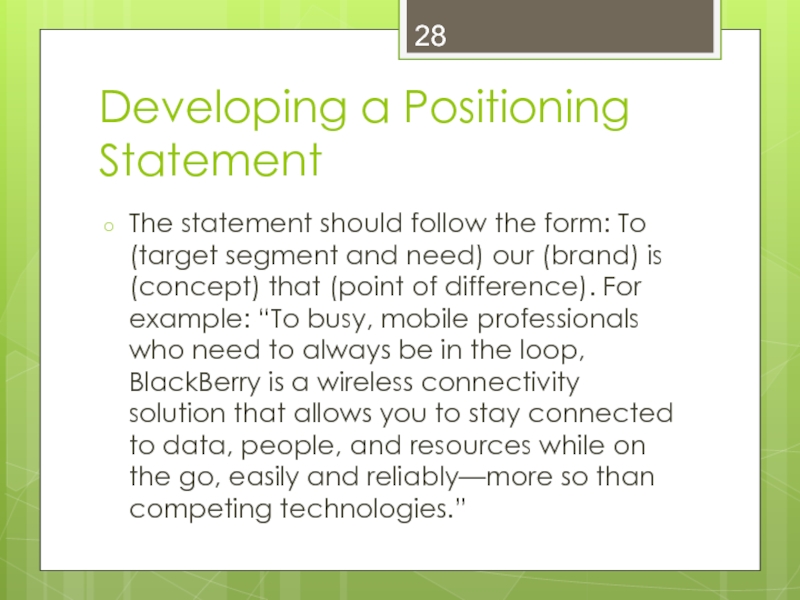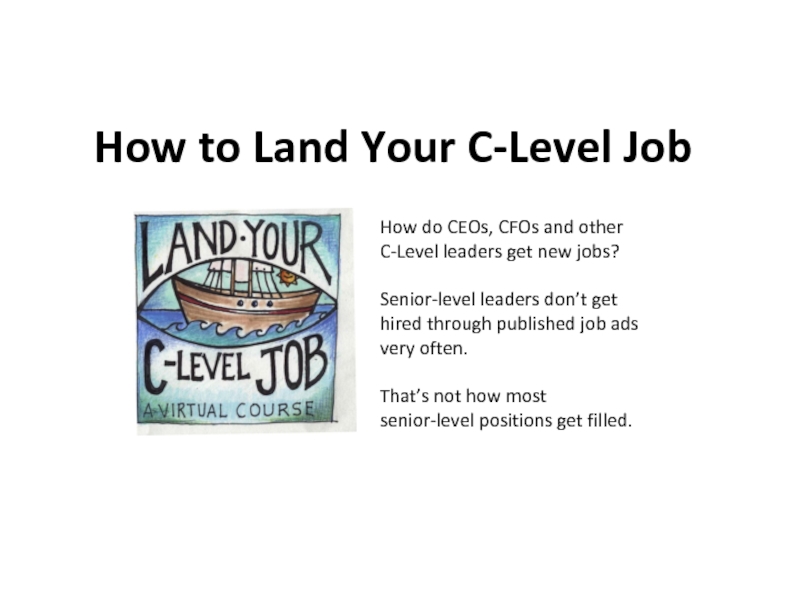- Главная
- Разное
- Дизайн
- Бизнес и предпринимательство
- Аналитика
- Образование
- Развлечения
- Красота и здоровье
- Финансы
- Государство
- Путешествия
- Спорт
- Недвижимость
- Армия
- Графика
- Культурология
- Еда и кулинария
- Лингвистика
- Английский язык
- Астрономия
- Алгебра
- Биология
- География
- Детские презентации
- Информатика
- История
- Литература
- Маркетинг
- Математика
- Медицина
- Менеджмент
- Музыка
- МХК
- Немецкий язык
- ОБЖ
- Обществознание
- Окружающий мир
- Педагогика
- Русский язык
- Технология
- Физика
- Философия
- Химия
- Шаблоны, картинки для презентаций
- Экология
- Экономика
- Юриспруденция
Market Segmentation, Market Targeting and Market Positioning презентация
Содержание
- 1. Market Segmentation, Market Targeting and Market Positioning
- 2. Market Segmentation, Market Targeting and Market Positioning Basic concepts Market segmentation Market targeting Market positioning
- 3. Basic Concepts: Definitions Market segmentation – dividing
- 4. Market Segmentation: Levels of Market Segmentation Mass
- 5. Basic Concepts: Relationships Market segmentation Develop profiles
- 6. Segment Strategy Undifferentiated marketing – a
- 7. Segment Strategy Differentiated marketing – a
- 8. Segment Strategy Concentrated marketing – a
- 9. Market Segmentation: Requirements for Effective Segmentation The
- 10. Market Segmentation: Segmenting Consumer Markets Geographic and
- 11. Market Targeting: Factors for Evaluating Market Segments
- 12. Deciding on the breath of market coverage
- 13. Market positioning A product’s position is the
- 14. Differentiation and Positioning The differentiation and positioning
- 15. Market Positioning: Objective and Subjective Positioning Objective
- 16. Market Positioning: 4 main ways to Differentiate
- 17. Market Positioning: Positioning Strategies Product attributes –
- 18. How many differences to promote? Unique selling proposition(USP) Positioning on more than one differentiator
- 19. A difference is worth establishing to the
- 20. A difference is worth establishing to the
- 21. Market Positioning: Value Positioning Value positioning –
- 22. MORE FOR MORE “More-for-more” positioning involves
- 23. MORE FOR THE SAME Companies can
- 24. THE SAME FOR LESS Companies offer
- 25. LESS FOR MUCH LESS Few people
- 26. MORE FOR LESS The winning value
- 27. Market Positioning: Positioning Maps Star rating 1
- 28. Developing a Positioning Statement The statement
- 29. Market Positioning: The potential pitfalls of weak
- 30. Repositioning strategies Gradual repositioning , which
Слайд 2Market Segmentation, Market Targeting and Market Positioning
Basic concepts
Market segmentation
Market targeting
Market positioning
Слайд 3Basic Concepts: Definitions
Market segmentation – dividing a market into distinct groups
Market targeting – the process of evaluating each market segments attractiveness and selecting one or more segments to enter;
Market positioning – arranging for a product to occupy a clear, distinctive and desirable place relative to competing products in the minds of target consumers;
Слайд 4Market Segmentation:
Levels of Market Segmentation
Mass marketing – using almost the same
Segment marketing – adapting a company’s marketing mix so it more easily matches the needs of one or more segments;
Niche marketing – adapting a company’s marketing mix so it more easily matches the needs of one or more subsegments where there is usually little competition;
Micromarketing – the company tailors its marketing programmes to the needs and wants of narrowly defined geographic, demographic, psychographic or behavioural segments. It includes local and individual marketing;
Слайд 5Basic Concepts: Relationships
Market segmentation
Develop profiles of resulting segments
Identify bases for segmenting
Market targeting
Develop measures of segment attractiveness
Select the target segment(s)
Market positioning
Develop positioning for each target segment
Develop marketing mix for each target segment
Слайд 6
Segment Strategy
Undifferentiated marketing – a market-coverage strategy in which a firm
Company marketing mix
Market
Слайд 7
Segment Strategy
Differentiated marketing – a market-coverage strategy in which a firm
Segment 1
Segment 2
Segment 3
Company marketing mix 1
Company marketing mix 2
Company marketing mix 3
Слайд 8
Segment Strategy
Concentrated marketing – a market-coverage strategy in which a firm
Company marketing mix
Segment 1
Segment 2
Segment 3
Слайд 9Market Segmentation:
Requirements for Effective Segmentation
The segments must be:
Measurable
Accessible
Substantial, cost-effective
Unique in its
Appropriate
Stable
Слайд 10Market Segmentation:
Segmenting Consumer Markets
Geographic and geodemographic segmentation – region, city size,
Demographic segmentation – gender, age and family life cycle, family size, income and occupation, education, religion, race, nationality
Behavioural segmentation – purchase occasion, benefits sought, user status, usage rate, loyalty status, readiness state, attitude towards the product
Psychographic segmentation – social class, lifestyle, personality
Слайд 11Market Targeting:
Factors for Evaluating Market Segments
The size and growth potential of
The structural attractiveness – Porter’s Five Competitive Forces: competitive rivalry, threat of new entrants, threat of substitute products, bargaining power of suppliers and bargaining power of buyers;
The organization’s objectives and resources / is the segment growing or declining, is the segment changing?
Слайд 12Deciding on the breath of market coverage
Single segment concentration;
Several segments;
Product specialization;
Market
Full market coverage;
Слайд 13Market positioning
A product’s position is the complex set of perceptions, impressions,
Слайд 14Differentiation and Positioning
The differentiation and positioning task consists of three steps:
identifying a set of possible customer value differences that provide competitive advantages upon which to build a position,
choosing the right competitive advantages
selecting an overall positioning strategy.
Слайд 15Market Positioning:
Objective and Subjective Positioning
Objective positioning – refers to the tangible,
Subjective positioning – focuses on the intangible aspects of the offer or experience. What matters in the customer’s perception of the service;
Слайд 16Market Positioning:
4 main ways to Differentiate
(Physical) product differentiation
Services differentiation
Personnel differentiation
Image differentiation
Location
Слайд 17Market Positioning: Positioning Strategies
Product attributes – technical products;
Benefits offered ;
Usage occasions
Different users – Red Bull;
Activities (sporting events);
Personalities – famous stars;
Origin;
Other brands – co-branding;
Competitors – against competitors or away from competitors;
Product class positioning;
Слайд 18How many differences to promote?
Unique selling proposition(USP)
Positioning on more than one
Слайд 19A difference is worth establishing to the extent that it satisfies
Important: The difference delivers a highly valued benefit to target buyers.
Distinctive: Competitors do not offer the difference, or the company can offer it in a more distinctive way.
Superior: The difference is superior to other ways that customers might obtain the same benefit.
Слайд 20A difference is worth establishing to the extent that it satisfies
Communicable: The difference is communicable and visible to buyers.
Preemptive: Competitors cannot easily copy the difference.
Affordable: Buyers can afford to pay for the difference.
Profitable: The company can introduce the difference profitably.
Слайд 21Market Positioning: Value Positioning
Value positioning – a range of positioning alternatives
More for less
More for same
Me too
More for more
Same for less
Less for less
Less for same
Same for more
Less for more
Less
Same
More
Price
Less
Same
More
Value
Слайд 22MORE FOR MORE
“More-for-more” positioning involves providing the most upscale product
gives prestige to the buyer, It symbolizes status and a loftier lifestyle;
Слайд 23MORE FOR THE SAME
Companies can attack a competitor’s more-for-more positioning
Слайд 24THE SAME FOR LESS
Companies offer equivalent quality products at a
Companies develop imitative but lower-priced brands
Слайд 25LESS FOR MUCH LESS
Few people need, want, or can afford
Слайд 26MORE FOR LESS
The winning value proposition would be to offer
In the short run, some companies can actually achieve such positions
In the long run, companies will find it very difficult to sustain such best-of-both positioning. Offering more usually costs more.
Слайд 27Market Positioning: Positioning Maps
Star rating
1
2
3
5
4
Price
50
100
150
200
250
High price
High quality
High price
Low quality
Low price
High quality
Low
Low quality
Unsustainable strategy
Rip-off strategy
Lovelock (2002)
Слайд 28Developing a Positioning Statement
The statement should follow the form: To
Слайд 29Market Positioning:
The potential pitfalls of weak positioning
Confused positioning - where
Over-positioning, where consumers perceive the organization’s products as being expensive and fail to recognize the full breadth and value of the range (this can be summed up in terms of over-promise and under-delivery)
Under-positioning, where the message is simply too vague and consumers have little real idea of what the organization stands for or how it differs from the competition.
Слайд 30Repositioning strategies
Gradual repositioning , which involves a planned and continuous adaptation
Radical repositioning, where an increasing gap between what the brand offers and what the market wants leads the management team to think about a major strategic change.
Innovative repositioning, where the planner finds a new strategic position that offers market opportunities that have not so far been identified by competitors.

